

New federal rules aim to end tax confusion for tribally owned businesses, boost clean energy projects
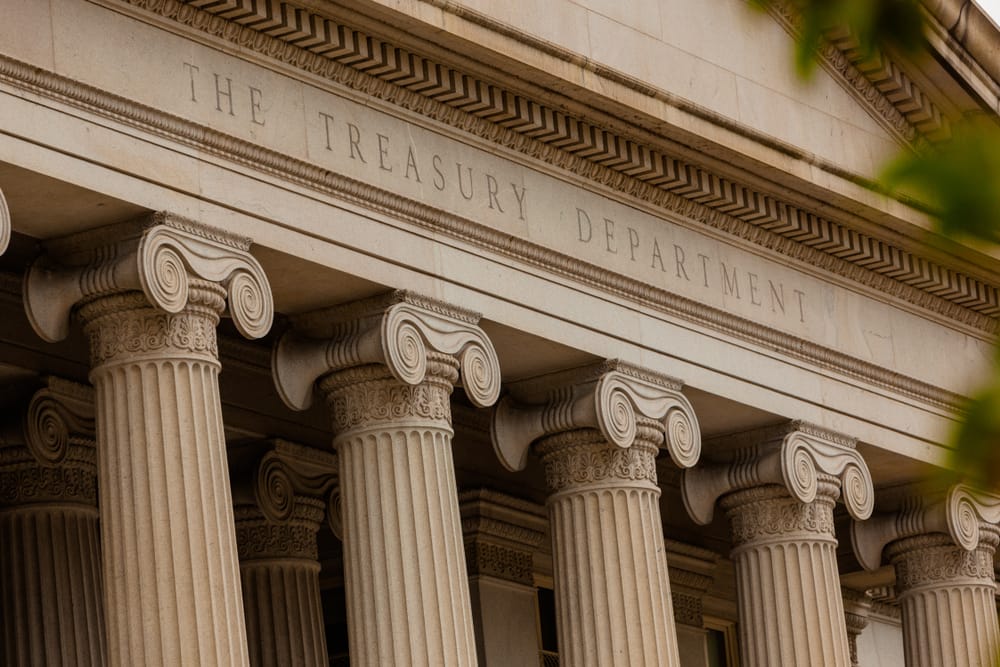
By Chez Oxendine, TBN
Three decades of confusion around the tax status of tribally chartered businesses may soon come to an end with new federal rules announced on Monday.
The Department of the Treasury and the Internal Revenue Service announced a proposed rule Monday afternoon that would clarify that businesses wholly owned by one or more tribes would share those tribes’ tax-exempt status. The rule aims to ensure that tribal governments and their wholly owned enterprises are on equal footing with other governments when it comes to tax status — a move that would support tribal self-determination. The rule would also explicitly make those tribal businesses eligible for clean energy “elective pay” tax credits, allowing them to receive direct payments for investments in renewable energy projects.
The rule “unshackles” tribal economies by providing tax certainty and ensuring tribal businesses can serve as revenue generators for their citizens, according to Treasury Deputy Secretary Wally Adeyemo.
“For far too long, tax uncertainty has held back tribes’ economic opportunity, and the Biden Harris Administration is reversing that trend,” Adeyemo said during a press call Monday. “Tribally chartered entities generate critical revenue for their communities, and today’s rules recognize their tax status to enable them to further their contributions to economic development.”
Confusion around the tax-exempt status of tribally-owned businesses has raised concerns around the efficacy of the Inflation Reduction Act’s pivot toward renewable energy for tribes, per prior Tribal Business News reporting. Alliance for Tribal Clean Energy CEO Cheri Smith said tribal governments and business leaders, attempting to launch clean energy projects, were “building the rocket ship while they were flying it.”
“Generally, tribal lawyers don't have a lot of experience in tax law because tribes don't pay taxes. Generally, tax lawyers don't have a lot of experience with tribes, because tribes don't pay taxes,” Smith said in a Jan. 21 story. “Everyone's digesting new rules and technical reviews and it's requiring a whole new team at the Department of Energy, which largely hasn't had (tribal) tax expertise in it.”
A Treasury representative, speaking on background, told Tribal Business News that long-standing, murky rulemaking contributed to confusion around tribally chartered businesses’ tax status over the past 30 years. By updating the rules, tribally owned corporations would be able to pursue tax credits — something many developers factored into project budgets.
Such credits can unlock private investment and interest in tribal renewable projects, scaling up possibilities for underfunded Native communities. At least one major project — a $150 million microgrid on the Viejas Band of Kumeyaay Indians’ reservation in California— has already utilized tax credit equity in their financing. That deal brought in money from coffee company Starbucks and U.S. Bancorp’s social investment arm, Impact Finance, per a prior Tribal Business News report.
“This is a pivotal moment for Indian Country,” Rodney Butler, chairman of the Mashantucket Pequot Tribal Nation and president of NAFOA’s board, said during the Monday press call. “So much economic opportunity flows from tax certainty — it’s critical to tribal economic development.”
Other tribal leaders echoed the sentiment. In a statement published by the Treasury, National Congress of American Indians (NCAI) President Mark Macarro said the new rules represent a “premium on tribal self-determination,” and should be used as an example going forward of federal deference to tribal sovereignty.
“This tilt toward embracing Tribal sovereignty in federal rulemaking should not be anomalous,” Macarro said. “With the leadership the Treasury has shown, now other agencies’ leadership will see that the primacy of Tribal government decision-making is valued.”
With the notice of rulemaking officially published, the Treasury and the Internal Revenue Service (IRS) will take public comment on the proposed rule for 90 days beginning Oct. 9. The department will also host tribal consultations on the rule Dec. 16-18, with a public hearing scheduled for Jan. 17, 2025.

Healing, disappointment mark Wichita efforts to bring relatives home from Carlisle School
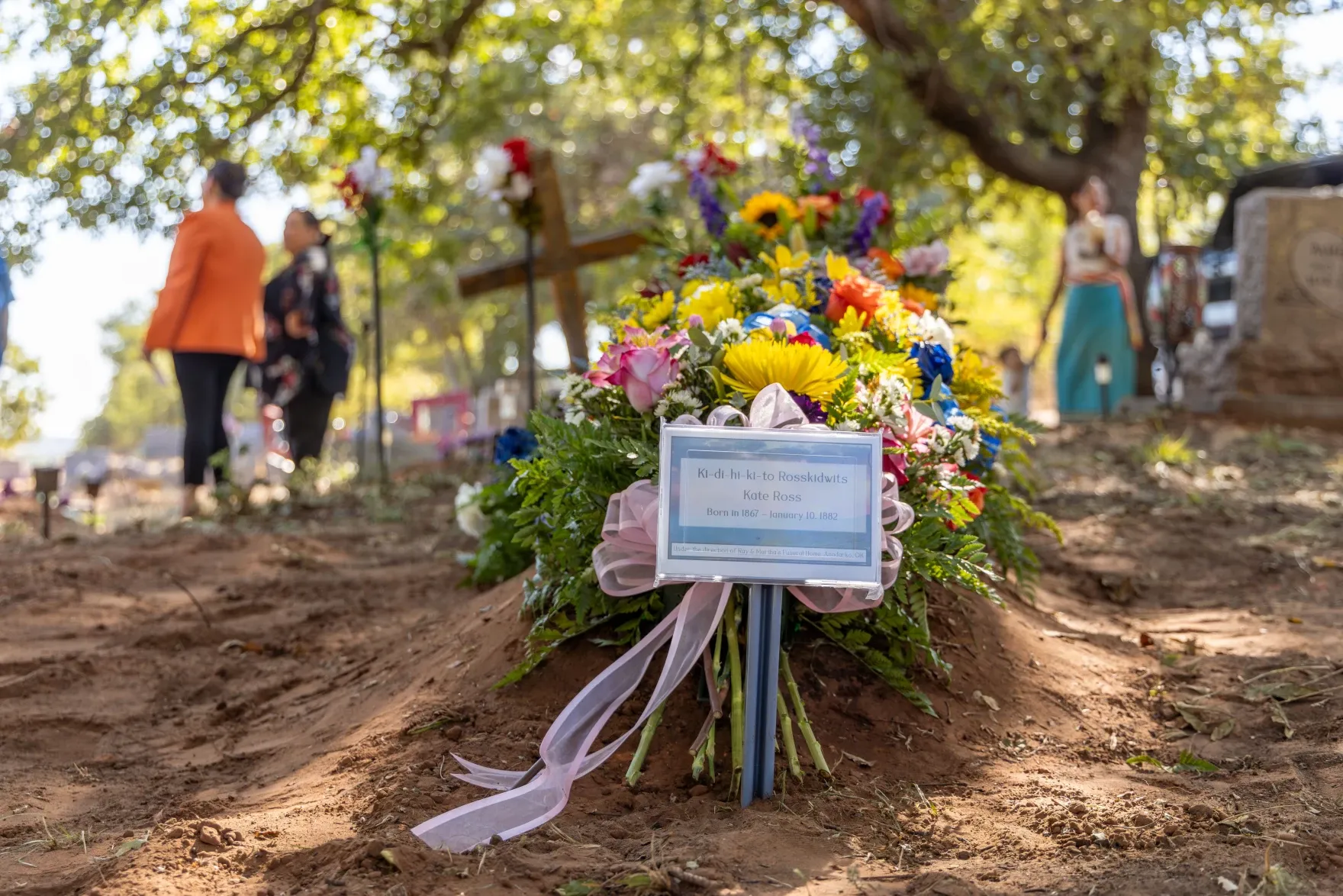
Four Wichita and Affiliated Tribes leaders traveled more than 1,300 miles to bring two relatives' home from the cemetery at Carlisle Indian Industrial School: Kate Ross and Alfred Charko. They only returned with Kate due to faulty labeling.
Carlisle Barracks used to be one of the most famous Indian boarding schools in the nation: Carlisle Indian Industrial School. It led the way for others in the country, striving to assimilate nearly 7,800 children by isolating them from their communities and cultures.
Indigenous children lost their culture, language and sometimes their lives at the school with the infamous motto — “Kill the Indian, save the man.”
Starr Chavez is the Secretary of the Wichita and Affiliated Tribes and the mother of a 13-year-old. She said she couldn’t imagine how her ancestors felt separated from their children.
“Someone decided one day that the way that you're living is not right, so let's change that, and let's make you different,” she said. “Let's move you all the way across the United States…and then, if you die, and you get sick, let's bury you and just call it a day.”
Chavez was one of four leaders of the Wichita and Affiliated Tribes who traveled to the barracks in Pennsylvania to bring home two teenage relatives who passed away while attending Carlisle: Kate Ross and Alfred Charko.
Both children died in the winter of 1882.
The Carlisle school paper Eadle Keatah Toh described Kate as a “patient in sickness, [who] smiled sweetly at the thought of being called home to the Father’s House.” She had stayed three years at Carlisle before her death related to lung illness, probably tuberculosis.
Alfred only attended the school for three months before his death, so notes of his character were left out of the paper.
When the modern-day Wichita women leaders —all of whom are mothers— arrived at the school’s cemetery, Vice President Tasha Mousseau said they were greeted by a handful of rows of standard white military headstones, surrounded by privacy fences blocking the ability to see in or out. Katie and Alfred were not buried near each other.
When what were thought to be Alfred’s remains were dug up, they discovered those remains were not in fact his.
“I don't think I really thought about this being the wrong person in the grave, the wrong relative,” Mousseau said.
According to the final forensic examination, the remains do not match the physical traits of Alfred. The remains belonged to a young man between 17 and 22.
“The most heart-wrenching part that brought me to tears was that this relative had been buried, dug up, reburied, dug up again,” Mousseau said. “Then we had to rebury him and leave him behind still not knowing who his people were, who his relatives were.”
Why Alfred’s grave couldn’t be found
The cemetery the Wichita leaders visited is not the original place where Kate and Alfred were buried.
In fact, there is a history of children being reburied, starting with the first student who passed away named Amos LaFramboise, according to Jim Gerencser, the director at the Carlisle Indian School Digital Resource Center.
He explained, before the Carlisle Indian Industrial School opened, it was the Carlisle Army Barracks and a Calvary school. The army purchased a plot in a cemetery called “Ashland,” which is where the founder of the boarding school, Richard Henry Pratt, tried to bury Amos.
“It was a privately owned cemetery, not a municipal cemetery,” he said. “They looked at the agreement, and it said it was for whites only. So that was why they had to then disinter the student who had just recently been buried and rebury him.”
The first cemetery for Native American students at Carlisle began four months after the school opened in 1879. Amos was not the first student buried there because another student passed before he could be reburied.
Then, in 1927, the deceased students were disinterred to a new location due to the expansion of an Army Medical Field Service School on the barracks.
Kate and Alfred are both listed in the plot maps before and after the disinterment. Kate’s first and last names are listed, while only Alfred’s first name is listed.
Gerencser said it is hard to pinpoint exactly what caused Alfred’s remains to be misidentified. Record-keeping of the first cemetery move in 1927 could have been faulty, or a headstone misplaced during disinterment.
“There is the possibility that when they replaced all the stones to standardize them in 1935 that they accidentally put a stone in the wrong place and mixed up exactly who was where,” Gerencser said. “There was a time later in the 20th century … they changed all the stones again, and there we know of some errors that were made during that change of headstones as well.”
While the discrepancy remains a mystery, it is not the first mistake of its kind.
According to the Office of Army Cemeteries, they have helped return 39 children to their families and tribes. So far, three students’ remains were inconsistent with their headstones: Alfred Charko, Wade Ayres (Catawba) and Edward Spott (Puyallup).
The U.S. Army Corps of Engineers offered archaeological and anthropological expertise to assist OAC in the Carlisle disinterment program.
“The Army is committed to seeking all resources that could lead us to more information on where Alfred may be located and to help us identify and return the unknown children in the Carlisle Barracks Post Cemetery,” said Karen Durham-Aguilera, the Executive Director of the Office of Army Cemeteries and Army National Military Cemeteries. “We express our utmost gratitude to all tribes and families who have the courage and strength to entrust us with this important mission.”
Kate laid to rest with her relatives
On a hot mid-September morning at the Rock Springs Cemetery in Anadarko, about 50 Wichita and Affiliated citizens and surrounding neighbors gathered to finally return Ross to the Earth.
A farm was across from the cemetery. Cows in the distance chimed into the ceremony with mooing, during the Wichita version of Amazing Grace, while the winds blew crisply through the trees.
“Before we bring her out, we're going to just take care of a little business here,” Mousseau began the service with an acknowledgment. “I put some traditional tobacco in here so that we can close that circle. We took her from Carlisle, and we put tobacco in that hole where they're refilling it …so we won't have any more loss in our tribe, that we won't lose any more children.”
One of Ross’ relatives, Daryl Galindo, spoke to honor her journey and the impact boarding schools have had on his people.
“These traumas that got on us, our people at the boarding schools,” Galindo said. “Our folks, they might have not known forgiveness. Today I know forgiveness, and that's what I want. I want that for my relative as she travels on 142 years.”
A resounding sentiment of love, healing, and justice echoed from the words of those who chose to speak at Kate’s ceremony, and a feeling of tranquility connected relatives who finally felt Kate's presence returned home.
“I think now that she's been buried with her ancestors and with the people that she should have been buried with, that she can finally rest and move on and be at peace,” Chavez said.
While the community gets to close the chapter of one relative peacefully, the search and restlessness of another will continue to go on.

Nation's Leading Native Advocacy Group Endorses Harris for President
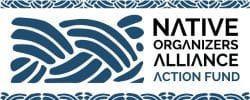
Native Organizers Alliance Action Fund Says Harris "Will Bring More Progress" in Indian Country
Washington, DC — The nation’s leading Native advocacy group, Native Organizers Alliance Action Fund, a 501(c)(4) partner to Native Organizers Alliance, endorsed the Harris-Walz ticket for President. The following statement from Judith LeBlanc (Caddo), executive director of Native Organizers Alliance Action Fund, can be quoted in-full or in-part.
“Native Organizers Alliance Action Fund is proud to endorse Kamala Harris for President. Indian Country has seen significant gains during the past four years of the Biden administration. Vice President Harris helped usher in new changes to ensuring the inclusion of Tribal nations in the federal government’s policies; supported the appointment of the largest number of Native employees in the federal government in U.S. history; achieved unprecedented financial investments in Indian Country; and restored protections at Bears Ears National Monument, a site that is sacred to many Tribal nations.
Significantly, the Biden-Harris administration also nominated the first Native woman, Deb Haaland, to serve in the role of Secretary of the Department of the Interior. This monumental achievement has opened new avenues for improving Tribal relations, with executive orders directing federal agencies to build stronger, more effective consultation processes.
Looking ahead, Native Organizers Alliance Action Fund believes a Harris administration will build on the momentum and bring more progress in Indian Country on the issues we care about most: upholding and strengthening Tribal sovereignty, addressing racial and economic disparities by expanding access to resources, and protecting the environment.
Vice President Harris’s running mate, Tim Walz, also brings a wealth of experience in working with Tribal nations during his time as Governor of Minnesota. In partnership with Lieutenant Governor Peggy Flanagan, a citizen of the White Earth Nation, he worked with 11 Tribes in Minnesota to address their concerns. Together they created a model for how states work with Tribal nations, requiring trainings on sovereignty and Tribal consultations by all state departments. Walz also took time to meet with the Native American Caucus at the Democratic National Convention, acknowledging the political significance of the Native vote.
Native Organizers Alliance Action Fund has been alarmed by comments made by the Trump campaign. Both candidates, Trump and Vance, have been on the record denying climate change, which disproportionately affects communities of color and threatens to destroy our sacred sites. The Trump campaign has also proposed seizing federal lands for energy extraction and to build housing developments. Both proposals are a violation of Tribal sovereignty and pose an extreme risk to our sacred sites. Vance has also called Indigenous Peoples Day “fake” and made derogatory comments about our Two-Spirit relatives. This is completely unacceptable and hateful rhetoric from a candidate for the second-highest office in the nation.
This is a pivotal moment in our democracy and the continued need to achieve full recognition of Tribal sovereignty. We have organized Native grassroots political pressure and won significant gains to protect our sacred places, secure funding for the needs of our elders and children and uphold our rights as sovereign nations through a stronger Tribal-federal relationship. We cannot afford to go back to the days where the rights of Tribes and Native peoples are trampled upon. Native Organizers Alliance Action Fund is focused on building a future where all people can participate in and benefit from a strong, inclusive multiracial democracy. Harris-Walz brings hope for the kind of future we need.”
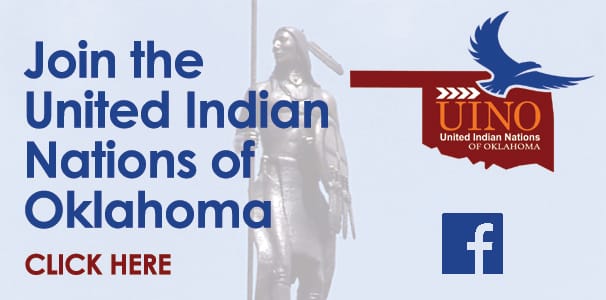
Cyclists humble as they complete historic Homeland Removal Ride
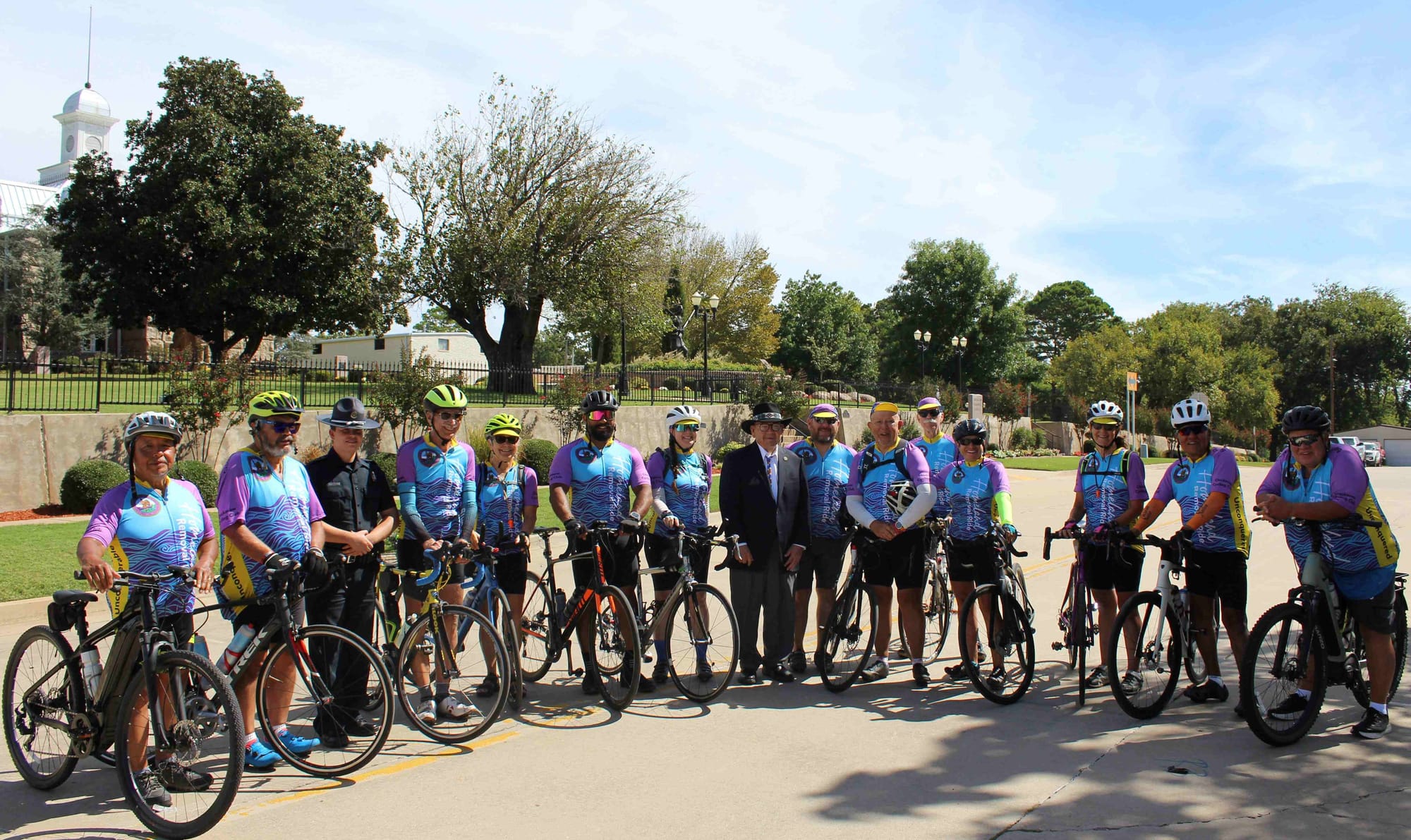
With more than three years of planning, members of the Chickasaw Cycling Club have accomplished their historic “Homeland Removal Ride” from Pontotoc, Mississippi, to the Chickasaw Nation Historic Capitol Building in Tishomingo, Oklahoma.
The cyclists followed the historic Removal route Chickasaws took from the Homeland to their future home in present-day Oklahoma.
“Our people went through major hardships on the Removal,” Chickasaw Nation Governor Bill Anoatubby said. “This ride commemorates and honors the trip these people made. Traveling that distance took a lot of determination. It took a lot of grit. These folks have done something important to honor those that came before them.”
In solemn commemoration of the difficult journey forced upon the Chickasaw people by Removal, the Chickasaw Cycling Club resolved to ride the route taken by the intrepid Chickasaws who were removed to Indian Territory. Recreated as accurately as possible using roadways passable by bicycle, the Chickasaw Cycling Club began its journey in Mississippi, riding more than 600 miles in 11 days. The ride was completed during the second day of the Chickasaw Annual Meeting and Festival.
This ride has been described as “spiritual” by the cyclists. According to the Chickasaw Cycling Club website, “Riders rode with their ancestors to feel their pain, determination and strength to overcome and not be defeated.”
“This ride was awesome,” said Steve Paniagua, club member. “It seems like at night I felt most connected to those that have come before me. When I thought I had a little problem I thought to myself, ‘I am not going to quit.’ They had it a lot harder. I had little aches and pains here and there, but in the end, I remembered what they went through. They had to walk or ride on horseback to an unknown land. It was quite humbling.”
The Chickasaw Cycling Club is comprised of Chickasaw citizens and employees, both of whom know and understand the significance of this historic ride. Thirteen members of the team took part. Cyclists came from both within the Chickasaw Nation and included many at-large citizens.
Chickasaw elder David Atkins, the eldest among the group, made the trip from Albuquerque, New Mexico, to participate in the Homeland Removal Ride.
“This was more than a bike ride,” Atkins said. “It was a spiritual, ancestral thing. It allowed us to identify with what our ancestors went through. Before each day’s ride we prayed and shared scripture. When we were putting this together it was the plan to end the ride during (Chickasaw Annual Meeting and) Festival.”
Chickasaw Nation Medical Center Chaplain Randy Wade gave a pre-trip prayer, while Chickasaw Nation Purcell Area Office Director Phillip Billy offered a post-trip prayer in Tishomingo. According to Paniagua, prayers sustained the group during the ride.
Recognizing the significance of the event, First American law enforcement agencies welcomed the riders as they entered Oklahoma. The Choctaw Lighthorse Police Department provided an escort from the state line to the border of the Chickasaw Nation. Once within the Chickasaw Nation, the Chickasaw Lighthorse Police Department took over escort duties.
Chickasaw Lighthorse police officer and Chickasaw Cycling Club member Jose Ramirez took part in the ride.
“I have been a member of the cycling club since 2018,” Ramirez said. “Though I have been training, those that came before me didn’t have that option. I wanted to experience what they did physically, spiritually and mentally to see what it was like.
“This was a humbling experience. We traversed areas that I couldn’t imagine doing so walking or riding on a wagon. We had the luxury of roads and a bicycle. It was a breathtaking experience, and I lost track of time.”
More than 20 friends, family, Chickasaw legislators and dignitaries were on hand to celebrate the completion of the ride. The riders were led by the Chickasaw Lighthorse Police Department in four victory laps around the capitol grounds. The number four is sacred within the First American community.
Care was taken when deciding the route the cyclists would travel. Along with the route itself, preparation was given to the stops along the way. The riders stopped and visited historically important sites along the trail.
Back in the mid-1800s, a group of Chickasaw left the Homeland near the armory off Old Military Road in Mississippi. This group picked up other Chickasaws from different areas as they traveled to Memphis, Tennessee. Once in Arkansas, there were multiple directions Chickasaws took to cross the state. Some went by river; some went by the North and South land routes.
The Chickasaw Cycling Club chose to follow the northern route. The route included stops near Little Rock and Fort Smith, Arkansas. Several resources were used to calculate the historical routes. Most information came from the “Chickasaw Removal” book written by Amanda L. Paige, Fuller L. Bumpers and Daniel F. Littlefield Jr.
“We gathered a lot of information from the (Chickasaw) Cultural Center for some of the older history,” cyclist John Welch said. “We felt confident in the route we took. We could have gone a different way, ours was not the only way.”
Except for the lack of children, the ride mimicked the demographics of those who followed original Removal route. The cyclists included elders, men and women between 42 and 76 years old. As the group traveled from the Homeland to Oklahoma, they moved only as fast at the slowest member. The fittest “warriors” among the cyclists looked out for those not as strong.
The Chickasaw Cycling Club first came together in 2015. The club is filled with riders of varying skill levels. The club welcomes anyone who enjoys cycling and the comradery road cycling offers. Enjoying Chickasaw culture is also important.
The Chickasaw Cycling Club is open to all with annual fees of $25 per individual and $40 for a family of four. To become a member, applicants must fill out the corresponding application and be as least 16 years old with an adult family member also participating in the club.
The club has participated in other notable rides, including the Pontotoc Pursuit, Oklahoma FreeWheel, the Tour of Payne and the Norman Conquest.
For more information on the Chickasaw Cycling Club, visit ChickasawCyclingClub.org.
Chickasaw Removal
After the Indian Removal Act was signed into law May 28, 1830, First American tribes in established states of the United States were under immense pressure to remove west of the Mississippi River.
The Chickasaws worked to negotiate the terms of their relocation to Indian Territory. The Treaty of Franklin, the Treaty of Pontotoc and the Supplemental Treaty of 1834 laid the groundwork for this relocation, and the Treaty of Doaksville with the Choctaw Nation in 1837 secured a place for Chickasaw people to settle in what was then Indian Territory.
The first group of Chickasaw travelers began the journey to their new home July 1837 from Mississippi. They began their journey by land through the swamps and bayous West of the Mississippi River to Arkansas. Weathering heat, rain, illness and other hardships, Chickasaws traversed the rugged landscape to what is now Oklahoma.
In the years between 1837 and 1851, more Chickasaws would make the arduous trek hundreds of miles, with some Chickasaw families still arriving into the 1890s.



